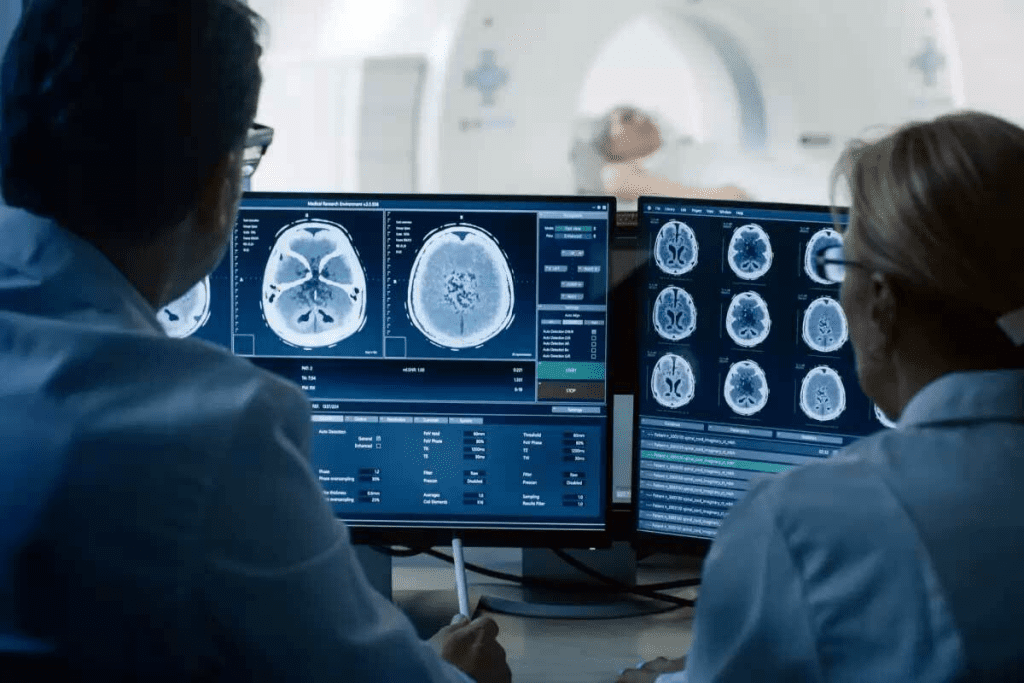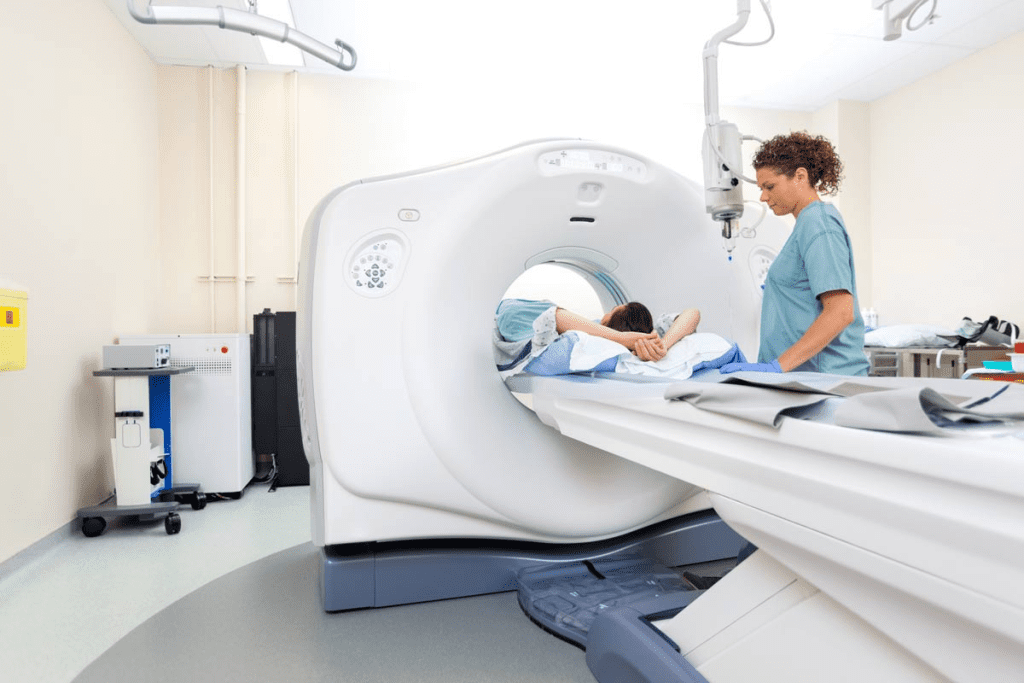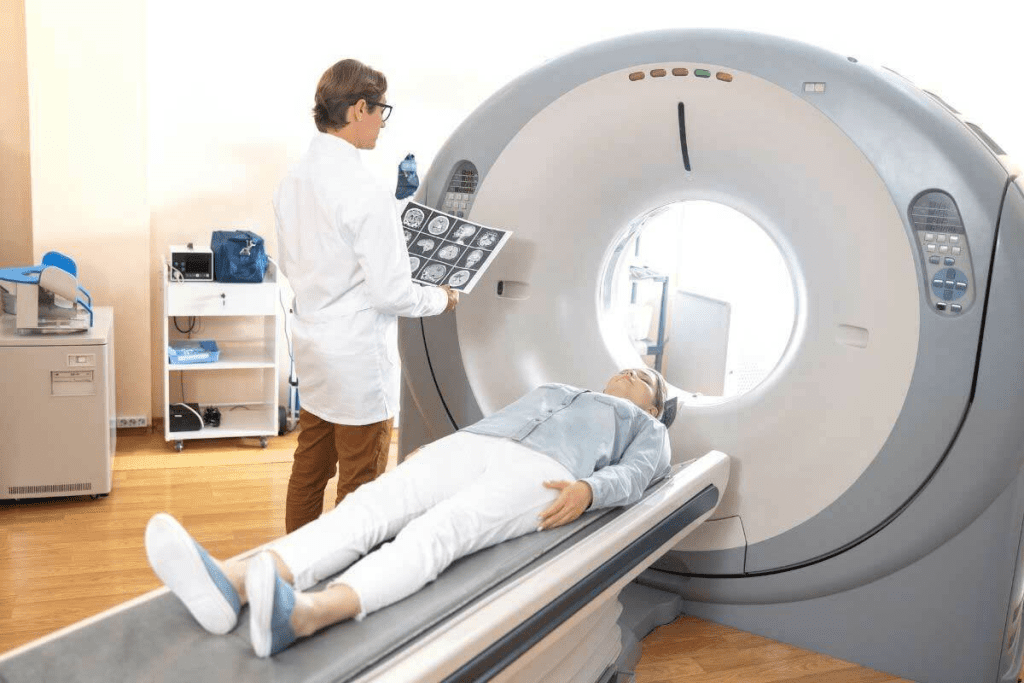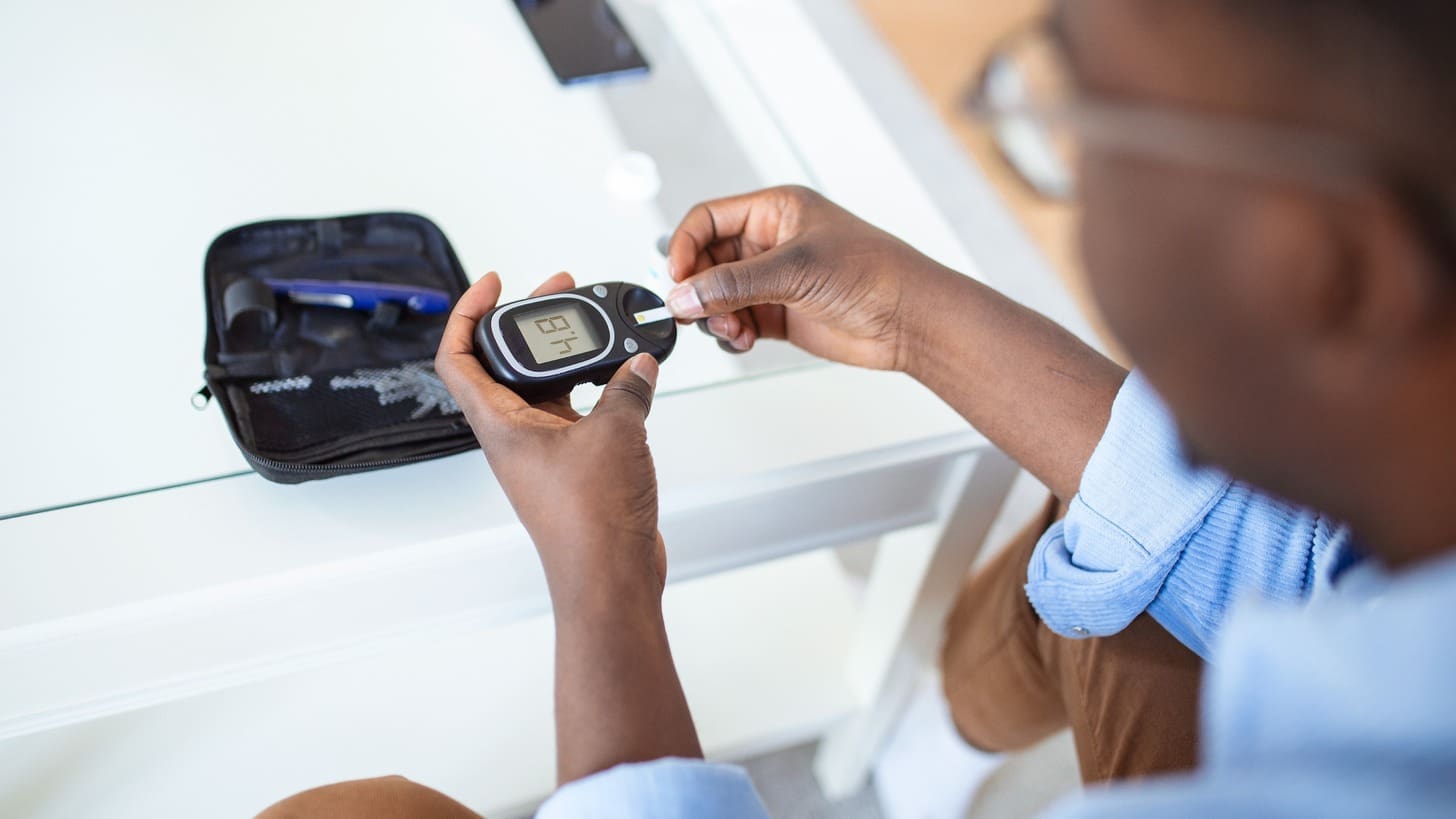Last Updated on November 27, 2025 by Bilal Hasdemir

Choosing the right imaging test for a diagnosis can be tough. At Liv Hospital, we know how important it is to pick the best tool for you. When deciding between an mri or ct scan, it helps to understand that MRI uses strong magnets and radio waves to create detailed images, especially of soft tissues, while CT scans use X-rays to provide quick and accurate pictures, often preferred for emergencies or bone imaging. Knowing these differences helps ensure you receive the best care tailored to your needs.
Key Takeaways
- MRI uses strong magnets and radio waves to create detailed images.
- CT scans use X-rays for rapid imaging.
- The choice between MRI and CT scan depends on the clinical context and diagnostic need.
- Liv Hospital is committed to providing world-class healthcare with advanced imaging technologies.
- Our team of experts will guide you in selecting the most appropriate imaging test for your condition.
Understanding MRI and CT Scan Technology

MRI and CT scans are key tools in medical imaging. They help doctors see inside the body. Knowing how each works helps decide which is best for different health issues.
How MRI Technology Works
MRI uses strong magnetic fields and radio waves to show body details. It’s great for seeing soft tissues like organs and tumors. It works by aligning hydrogen atoms with a magnetic field, then using radio waves to create images.
MRI is top-notch for soft tissue like tumors and brain issues. It gives clear images of soft tissues, which is key for brain health checks.
How CT Scan Technology Works
CT scans use X-rays to make detailed images of the body. They’re fast, making them great for emergency cases. The tech rotates an X-ray source around the body to get images from all sides.
CT scans are best for bones and lungs. They’re also good for patients with metal implants, unlike MRI.
MRI and CT scans differ in how they work and what they’re good for. MRI is better for soft tissues, while CT scans are great for bones and lungs. Knowing this helps pick the right tool for health issues.
- MRI Advantages: Superior soft tissue imaging, no radiation exposure.
- CT Scan Advantages: Quick imaging, excellent for bone and lung imaging.
Which Is Better: MRI or CT Scan for Brain Imaging?

Choosing between MRI and CT scans for brain imaging depends on several factors. These include the condition being diagnosed and the urgency of the situation.
MRI technology is often the first choice for brain imaging. It’s great for seeing soft tissues clearly. This is why MRI is good for finding tumors, strokes, and neurological disorders.
MRI Advantages for Brain Tissue Visualization
MRI gives detailed images of brain tissue. It can spot small changes in soft tissues. This is key for diagnosing complex neurological conditions.
For example, MRI can find small tumors or lesions that CT scans might miss. Its ability to show soft tissues makes it essential for neurologists and neurosurgeons.
CT Scan Benefits for Brain Emergency Situations
CT scans are faster and more available. They’re perfect for emergencies where quick diagnosis is needed, like trauma or acute bleeding.
CT scans can quickly give vital information in emergencies. This helps doctors make fast decisions about patient care. This speed is a big plus in urgent care settings.
Comparing Diagnostic Accuracy for Neurological Conditions
When it comes to neurological conditions, MRI is usually more accurate for soft tissue abnormalities. But CT scans are better at finding acute hemorrhages and bony issues.
The choice between MRI and CT scans depends on the situation and what’s needed for diagnosis and treatment. Knowing the strengths and weaknesses of each helps doctors make the best choice.
MRI vs. CT Scan for Cancer Detection and Staging
For cancer patients, knowing the difference between MRI and CT scans is key to treatment planning. Both tools have their own strengths and are used at different stages of cancer care.
Soft Tissue Tumors: When MRI Excels
MRI shines when it comes to soft tissue tumors. It offers high detail, helping to spot and stage cancers in soft tissues like the prostate, breast, and liver. This detail is essential for planning surgeries and tracking how treatments work.
Bone and Lung Cancer: CT Scan Advantages
CT scans, on the other hand, are great for bone and lung cancers. They’re often the first choice for finding and staging these cancers. This is because they give a full view of the body, including bones and lungs. They’re key in spotting lung nodules and bone metastases.
Comparative Effectiveness in Cancer Staging
In cancer staging, MRI and CT scans each have their place. MRI is best for soft tissue tumors, while CT scans are better for bone and lung cancers. The right choice depends on the cancer type and where it is. Studies help decide which scan is best for each cancer.
- MRI is ideal for soft tissue tumors and certain neurological cancers.
- CT scans are preferred for bone, lung, and certain abdominal cancers.
- The choice between MRI and CT scan depends on the cancer type and location.
CT Scan Radiation Risks
One big thing to think about with CT scans is the ionizing radiation they use. While they’re very useful, too much radiation can lead to more cancers. It’s important to balance the benefits against the risks and look for other options when possible.
In summary, MRI and CT scans are both important in cancer care. Knowing their strengths and weaknesses helps doctors pick the best test for each patient.
Contrast Agents: Differences and Risks
To make MRI and CT scans better, contrast agents are used. But their safety levels are different. Each imaging method uses unique substances with their own risks.
CT Contrast Media and Possible Reactions
CT scans use iodine-based contrast media. These are mostly safe but can cause allergic reactions. People with allergies or kidney issues should talk to their doctor before a CT scan.
MRI Contrast Agents and Their Safety Profile
MRI scans use gadolinium-based contrast agents. These are safer than iodine-based CT agents, with less chance of allergic reactions. But gadolinium can be risky for those with severe kidney problems, leading to rare conditions like NSF.
MRI contrast agents are less likely to cause allergies than CT agents. This makes them safer for people with allergies. But the choice of contrast agent depends on the patient’s health and needs.
Claustrophobia Considerations
Some people get claustrophobic during MRI scans because of the tight space. This can make the scan hard or even too much to handle. Open MRI machines or sedation might help those with claustrophobia.
Scan Duration and Noise Levels
Both MRI and CT scans last different times, but MRI scans usually take longer. MRI machines also make loud noises, which can be scary. Ear protection is given to help with this.
In summary, MRI and CT scans both use contrast agents, but their safety and risks are different. Comfort during the scan, like dealing with claustrophobia and loud noises, is also important for a good experience.
Medical Implants and Device Compatibility
When we talk about medical imaging, implants or devices can change our choice between MRI and CT scans. We need to check if these devices work well with the imaging tech to keep patients safe.
MRI Contraindications with Metal Implants
MRI uses strong magnetic fields. These fields can mess with some metal implants. For example, pacemakers, aneurysm clips, and metal fragments might not work right or could get too hot. People with these implants usually can’t have an MRI unless the device is safe for MRI use.
For example, a person with a pacemaker could be in danger if the MRI’s field messes with it. In these cases, CT scans are a better choice.
“The presence of certain metal implants or devices can contraindicate the use of MRI due to the potentially harmful interactions with the strong magnetic fields.” “ A radiologist
CT Scan Compatibility with Medical Devices
CT scans don’t use magnetic fields. So, they usually work with most implants and devices. This makes CT scans safer for people with metal implants that can’t go through an MRI.
| Imaging Modality | Compatibility with Metal Implants | Typical Use Cases |
| MRI | Limited; depends on implant type | Brain, soft tissue imaging |
| CT Scan | Generally compatible | Emergency situations, bone, and lung imaging |
The table shows MRI is better for some things, but has limits with metal implants. CT scans are safer for people with these implants.
In short, picking between MRI and CT scans for patients with implants needs careful thought. Always talk to a doctor to find the best imaging method for each person.
Cost and Accessibility Considerations
It’s important to know the cost and how easy it is to get MRI and CT scans. These things can change a lot based on where you are and who you see. Costs and how easy it is to get these scans can really differ.
Comparative Costs of MRI and CT Scans
Why MRI scans cost more than CT scans is because of the tech used and who does it. MRI scans need special tech, which makes them pricier.
- Average Cost Range for MRI: $400-$3,500
- Average Cost Range for CT Scan: $270-$5,000
Prices can also change based on where you are. Cities usually cost more than rural areas.
Insurance Coverage and Reimbursement
How much you pay out of pocket depends a lot on your insurance. Most plans cover both MRI and CT scans. But how much they cover can be different.
- Pre-authorization requirements may apply for certain scans.
- Deductibles and co-pays can affect the final cost to the patient.
- Out-of-network services may result in higher costs or may not be covered.
Always check your insurance before getting a scan.
Availability and Wait Times
How easy it is to get an MRI or CT scan and how long you have to wait can change a lot. This affects how fast you can get a diagnosis and start treatment. Things that can change availability include:
- The number of scanning machines available at a healthcare facility.
- The demand for scans in a particular area.
- The staffing levels of radiologists and technicians.
Places like Liv Hospitalwork hard to keep wait times down while keeping quality high. They aim to make sure you get the best care fast.
In short, choosing between MRI and CT scans should consider more than just what they can do. Costs and how easy they are to get are also key. Knowing these can help both patients and doctors make better choices.
Conclusion: Making the Right Choice Between MRI and CT Scan
Choosing between an MRI and a CT scan depends on the situation and the body area. MRI is great for soft tissues, while CT scans are fast and used in emergencies. This choice helps doctors get the right images for diagnosis.
For cancer, MRI or CT scan use varies by cancer type and location. MRI is better for brain and bone cancers. CT scans are often used for lung and other cancers.
Doctors choose MRI or CT scans based on each patient’s needs. Knowing the strengths and limits of each helps doctors make the best choice. This leads to accurate diagnoses and effective treatments.
FAQ
Is an MRI or a CT scan better for diagnosing brain conditions?
MRI is often better for seeing brain tissue details. It can spot small changes in soft tissues. This makes it great for finding tumors, strokes, and other brain issues.
Which is better: CT scan or MRI for detecting cancer?
Both MRI and CT scans are good for finding cancer. MRI is better for soft tissue tumors. CT scans are better for bone and lung cancers. The right choice depends on the cancer type and situation.
Is a CT scan better or an MRI for emergencies?
CT scans are faster and easier to get in emergencies. They’re great for quick diagnoses in trauma or bleeding cases.
What are the risks associated with CT scan radiation?
CT scans use radiation, which can increase cancer risk. But the benefits often outweigh the risks, like in emergencies or serious diagnoses.
Are MRI contrast agents safer than CT contrast media?
MRI contrast agents are safer than CT contrast media. But both can be risky, mainly for those with kidney issues. CT contrast can cause allergic reactions and isn’t for everyone.
Can I get an MRI if I have a medical implant?
MRI is not safe for people with certain metal implants. The strong magnetic fields can harm or heat up these devices. Always tell your doctor about implants before an MRI.
How do the costs of MRI and CT scans compare?
MRI and CT scan costs vary. They depend on technology, staff expertise, and facility costs. MRI scans usually cost more.
Will my insurance cover the cost of an MRI or CT scan?
Insurance coverage affects how much you’ll pay out of pocket. Always check with your insurance to see what’s covered for MRI and CT scans.
How long do MRI and CT scans typically take?
MRI scans take longer, often 15 to 90 minutes. CT scans are quicker, usually just a few minutes.
What is the difference between an MRI and a CT scan in terms of patient comfort?
MRI scans can be tough for patients due to the tight space, noise, and long time. CT scans are more comfortable because they’re faster and quieter.
References
- Ahmad, N., Sajid, M. S., & Javed, A. (2025). Comparative analysis of MRI and CT scans for the diagnosis of brain tumors, considering MRI as the gold standard. Journal of Health and Wellness Care Research, 3(1), 15-27. https://doi.org/10.61919/a82eqd69
- Abujarad, B., & Neil, M. (2018). Application value of CT and MRI in the diagnosis of primary brain lymphoma. Journal of Clinical Neuroscience, 54, 123-130. https://www.ncbi.nlm.nih.gov/pmc/articles/PMC5950549/






